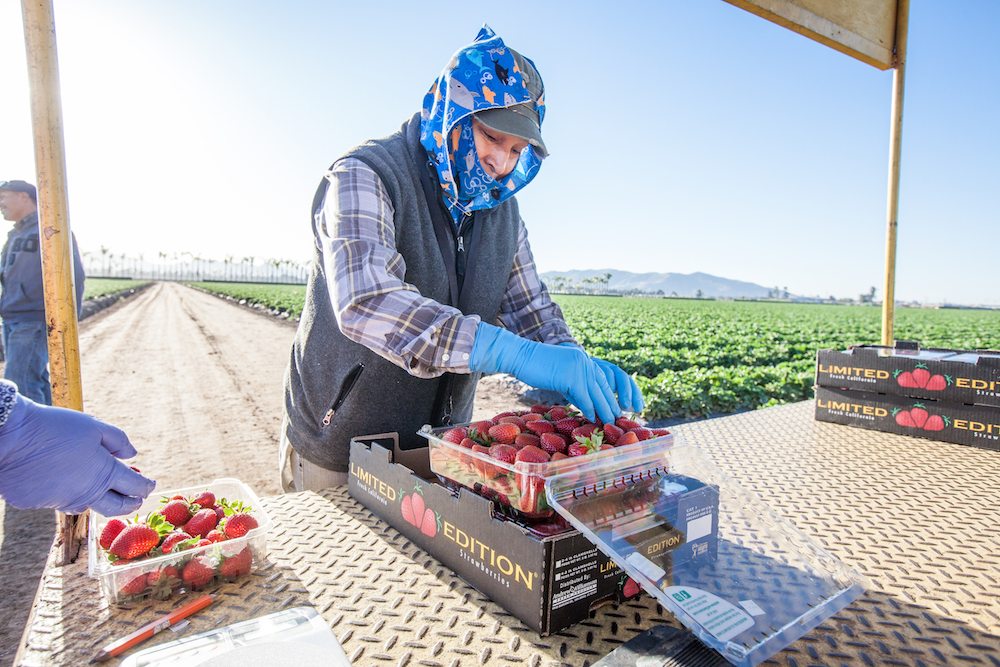“Ten years later, nothing was the same”
The changes that came next, the ones that defined the landscape Jonah stepped into in 2013, had more to do with life outside the kitchen than inside. In 2003 there was no Facebook, no Twitter, no Eater or Grubstreet.com, no Instagram or Foursquare, no iPhone or Android. The debut of Top Chef was still three years away; Mario Batali might be gaining a following on Molto Mario, a dump-and-stir instructional television show, but the era of competitive cooking, with the lure of money, prizes, and national exposure for any talented comer, had not yet begun. The economy was good, so there was little need to rethink the spacious bricks-and-mortar model. The leading edge of the millennials had just hit twenty-one, most of them still too young to drive, not yet the kind of marketing force that defined trends.
Ten years later, nothing was the same: More people talked about food more often, in more ways, until the ability to make great food achieved celebrity status—which in turn increased the volume and frequency of the conversation. Cooking for a living developed cachet, and held out the double promise of profits and fame. Nick Anderer, who was only nine years older than Jonah, had been embarrassed to tell his professor father that he intended to be a chef, but shame was no longer an issue.
The Bureau of Labor Statistics reported that the number of chefs and head cooks in the New York City area more than doubled between 2003 and 2013, from just over three thousand to more than seven thousand, even as an increasing number decamped to escape the city’s competitive job market. Restaurant openings were up, although closures kept pace, and Nick marveled that, as he saw it, “Anyone can have a 40-seat restaurant in the East Village.” From there a chef could catapult to empire, like Momofuku’s David Chang, who had spun the neighborhood’s Momofuku Noodle Bar, opened in 2004, into a global network that continued to grow—five restaurants in New York City, with more in development; locations in Washington, D.C., Toronto, Canada, and Sydney, Australia; the Milk Bar bakery, involved in its own expansionist agenda; a quarterly food publication, Lucky Peach; an online market for products and souvenirs.
A chef might find herself at the happy intersection of effort and opportunity, a celebrity without seeking it, as April Bloomfield did when the man who would become her business partner, Ken Friedman, auditioned her to become the chef at his gastropub, The Spotted Pig. She was British and knew the food; he was already well into planning and needed a chef who could execute his idea. Suddenly Bloomfield was no longer an anonymous if well-regarded sous chef at London’s River Café, but at twenty-nine the standard-bearer for a new dining concept—new to New Yorkers, at least—and in charge of a kitchen that would be the first of several they opened together.
Along the way, they upended accepted notions of time and space: Danny Meyer had waited nine years to open his second white-tablecloth restaurant, Gramercy Tavern, an eternity by current standards, and a model that chefs seemed in a hurry to leave behind. Nick Anderer, who worked in kitchens for eleven years before he got his name on a menu, created one at Maialino that was designed to bridge the gap between the dwindling number of orders for a traditional coursed meal—“composed appetizer, composed second course, composed entrée, composed dessert”—and the more fashionable shared plates. He imagined that the next place he’d open for Meyer’s company, a Roman pizzeria called Marta, was the likelier model for the new age—no tablecloths, a big dis- play kitchen, and pizza nudging entrées out of the way.
The familiar middle ground—a chef and his restaurant, a reservation, a meal—started to feel tentative if not shortsighted, an unreliable foundation for a long career.
Meyer, referred to as “the greatest restaurateur Manhattan has ever seen” by the New York Times, evaluated the scene as “good and bad,” and he wasn’t equivocating. Too much had changed, too fast, to be able to predict how all of this would resolve itself, whether the antic pace would last or correct itself into more modulated growth. In the meantime, the generation in play—cooks on the cusp of a career—were not likely to hold still long enough to find out, lest they be left behind.
It seemed impossible to reconcile the impact of everything that had happened in a single decade. Social media was good, surely, because it helped a young chef spread the word about his new place, cheaply and quickly—and bad because it sped up the conversation. Chefs used to have six months to find their feet before a review, but now critics showed up in the first six weeks, and an opening without online coverage might as well not have happened.
Competition television was good and bad for the same reason—it promised a backstage look at kitchen life, which got viewers more interested in dining out and in the chef as media personality, but it drew people to the profession who would never survive a season of dicing vegetables in a basement prep kitchen, as Jonah had at Chanterelle. Chef Tom Colicchio, the head judge of Bravo’s Top Chef since its 2006 debut, distinguished that show, which allowed its contestants to “shine,” he said, from shows that shamed contestants with challenges they’d never encounter in real life and loud, extended dressings-down, a difference seemingly lost on viewers who now watched cooks of any age cook under any circumstances. The Food Network alone had more than one hundred million viewers for what Michael Pollan, author of The Omnivore’s Dilemma, called “gladiatorial combat” in a piece for the New York Times. Pollan saw food shows as sports television, and the analogy extended beyond cutthroat competition: Chefs could be rich and famous like celebrities in other fields.
Success started to look like anything that got people in the door, or up to the truck window, and eager candidates lined up for their shot.
Unless, of course, they failed, in an equally spectacular fashion. The economy was another element in the whiplash equation, with unexpected consequences no matter what it did. The healthy prerecession economy seemed at the time to be a gold mine—easy mortgages and plenty of places to rent—but it turned out to be a money trap when the recession hit and previously giddy chefs found themselves in over their heads. And the years of tight money rewarded ingenuity: A young chef might have trouble raising money to rent a space, but ambition couldn’t wait, so he looked for an alternative, and the recession elevated the food truck from the ubiquitous ice-cream vendor to a gourmet outpost on wheels. Los Angeles’s classically trained Roy Choi was the first food- truck operator to make the top ten on Food & Wine magazine’s Best New Chef list, in 2010, with the Kogi Korean BBQ truck he’d launched two years earlier. Kimchi on a quesadilla made perfect sense, as long as people lined up to buy it.
Success started to look like anything that got people in the door, or up to the truck window, and eager candidates lined up for their shot. USHG had for the first time received two thousand unsolicited applications in a single year from aspiring cooks, unprecedented for the sheer number—and for the speculative nature of the inquiries, which were not submitted in response to a specific job posting but sent just in case a position opened up. Some of those cooks intended to be the next Jonah, and he hadn’t even found a space yet.
Richard Coraine was a thirty-year industry veteran who now supervised restaurant development for USHG, and he saw a sea change in how people got to the point where Jonah now was. The straightforward path to becoming a chef, based on “competence and sanctions,” was obsolete. In its place, more opportunity, and more disarray.
Reprinted from Generation Chef – Risking it all for a New American Dream by arrangement with Avery Books, members of Penguin Group (USA) LLC, A Penguin Random House Company. Copyright © 2016, Karen Stabiner








